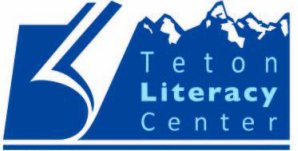Reading Comprehension and Fluency
The bulk of our virtual lesson will be spent working on your student's reading comprehension and fluency. Reading comprehension is specific to your student's understanding of a text (e.g. can your student describe the plot), while reading fluency is all about how well your student reads (accuracy, rate, and expression). We will provide you with specific prompts and strategies to target these reading skills, but wanted to share some of our favorite virtual resources we have discovered for comprehension and fluency work.
On-Line Libraries
Fountas and PinnellIn previous years Fountas and Pinnell has been an essential curriculum resource for our reading comprhension. We are hoping to gain virtual access to their on-line library so that it will be a great resource for you to use, once again.
|
HooplaTeton County Library is an amazing resource to access ebooks to read with your student through their Hoopla App. Because you are now officially an educator (as a tutor), you can signup at the library for an educator account and have access to 25 books a month to borrow for your student.
|
Epic.comEpic.com has become our go-to virtual library for leveled books. Create your on-line account and login. Having access to Epic's virtual library allows your student to choose a book that aligns to their interests, rather than having us just pick a book for them. We'll likely be using Epic a lot, so please let us know if you've got any questions.
|
Fluency
Fluency is defined by the International Literacy Association as reasonably accurate reading, at an appropriate rate, with suitable expression, that leads to accurate and deep comprehension and motivation to read. Reading fluently does not mean reading fast. In many cases non-fluent reading leads to reluctant reading. The overall goal of reading is that what we read makes sense! Look over the information below to uncover more about reading fluency and some strategies to incorporate it into your lesson
Echo ReadingA rereading strategy designed to help students develop expressive, fluent reading as well as used for print knowledge. In echo reading, the teacher reads a short segment of text, sometimes a sentence or short paragraph, and the student echoes it back. Echo Reading is great to use if you are working with your child on their fluency. Make sure to be extra expressive and pause at punctuation.
|
Re-ReadingSometimes your student might love a passage so much, they just want to read it again. Well, perhaps not. However, we will often prompt you to ask your student to reread something that they're already familiar with (Songs, Poems, Letters, Plays, etc.). Therefore they don't have to spend as much energy decoding new words, but practicing other skills relevant to building fluency.
|
Timed ReadingPerhaps your student is as competive as Michael Jordan of Mia Hamm, well we have a fluency activity just for them. Timed readings will encourage students to repeatedly reread a text and compete with themselves. Little do they know, this hidden literacy activity is really building fluency and can target many skills depending on the approach you take.
|
Comprehension
Reading for meaning can be a really challenging endeavor, since we are taught the sounds (phonics) of words before we uncover the meaning. Therefore, a student might be able to chunk out a word, and display great fluency, but has no idea what they're actually uncovering in the text. Utilizing the following strategies will provide your students with some new tools in order to read for meaning.
Comprehension QuestionsWe primarily use Fountas and Pinnell's "Literacy Continuum" to provide you with targeted comprehension questions. These questions are geared to ask your student to both think about, and beyond, the text at hand. Your Tutor Coach will primarily provide you with these questions to ask, but here is a link to some of the leveled comprehension questions.
|
VisualizationA really important reading comprehension strategy is visualization. Visualization is an important skill because: 1. It makes reading more fun. 2. It helps your student to monitor if they're understanding what they are reading, 3. It improves their comprehension. Good readers use this strategy to help them remember what they read. Click on this link to learn more about visualization strategies.
|
WritingWriting forces your brain to process information in a more detailed way, which therefore will help you better understand a text. We will often align a writing activity to your student's comprehension reading to encourage them to think about the text in newfound ways. Click on this link to discover why it's essential to incorporate writing into your comprehension practice.
|
Have a question, we're here to help!
Please give our office a call at 733-9242 or reach out to your Tutor Coach directly.




